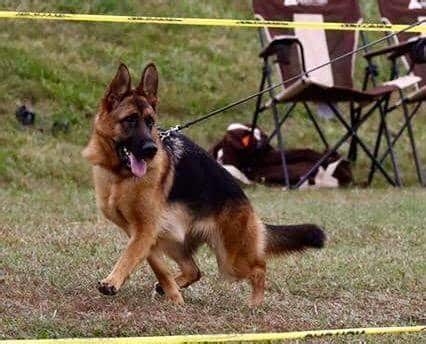Dog Fence Alternatives: Keeping Your Best Friend Safe
Don’t you think for dedicated dog owners, ensuring their pet’s safety and freedom in the yard is very important? Well, traditional fences have been the usual answer, but there are now many creative fence alternatives for dogs that give people safety and a sense of freedom.
This guide will show different ways to keep your dog in your yard without a normal fence. It will also discuss the main reasons you should do this, look at different dog-specific fence choices, and give you helpful tips on choosing the right fence alternatives for dogs.
We’ll also talk about common worries, like dogs digging under or jumping over fences, and answer frequently asked questions to help you make smart decisions. Throughout the process, we’ll stress how important it is to keep your dog safe and healthy.
How to Keep Your Dog in The Yard without a Fence
There are many creative and effective alternatives to traditional fencing that you can use to keep your dog safe and let them run freely in your yard. Each offers a different mix of functionality, good looks, and room for your furry friend to grow. If you want to keep your dog in the yard without using a traditional fence option for dogs, this will help you with some creative ideas.
This way, you can choose based on your dog’s needs while ensuring they are safe and happy.
1. Invisible Fences

A popular and modern choice is invisible fences, called electric or buried fences. An underground wire and a special collar send out a static charge to keep your dog safe from crossing the line that is set as a boundary.
2. Physical Barriers
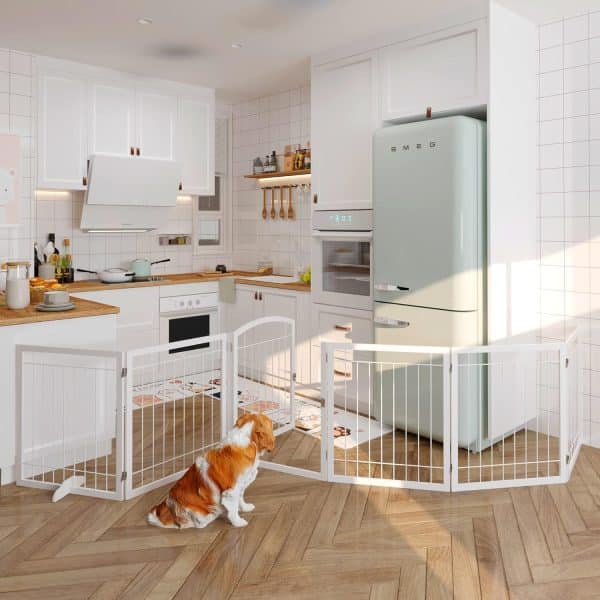
Another option is to build a physical barrier out of things like bushes, hedges, or decorative yard fencing. These choices not only make your yard look better, but they also keep your dog in the yard.
3. Exercise Pens
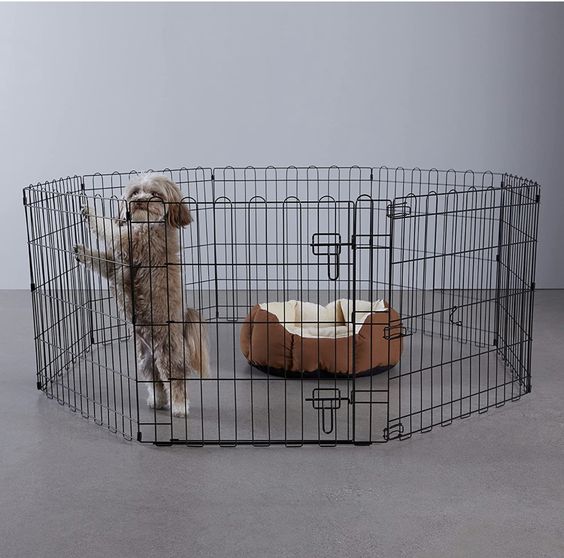
Exercise pens or playpens that you can carry around are another option. Your dog can play in these pens, which are both small and large, so they keep them safe while they enjoy the outdoors.
4. Tie Out or Long Leash

If you want to give your dog freedom and control simultaneously, use a long leash or tie out. Your dog can roam freely within a set area with this option. They can explore while still having a safe connection to your yard. It’s important to ensure the leash fits your dog properly and is safe.
Why Should You Keep Your Dog in The Yard?
Not only is it a matter of ease to ensure your dog is safe and sound, but every dog owner must do so. As much as there are many good reasons to give your dog a limited and controlled outdoor space, it is important to understand why this is an important part of being a responsible pet owner.

1. Safety
The safety of your four-legged friend may be the most important reason. Keeping your dog in the yard lowers the chance that they will get lost on busy streets or into potentially dangerous situations, which lowers the risk of accidents or injuries.
2. Harmony in The Neighborhood
Being a responsible pet owner also means being nice to your neighbors. You can keep your neighborhood peaceful by ensuring your dog stays in your yard. It will keep them from entering your neighbor’s yards and causing problems.
3. Following the Rules
Many local laws and homeowners group rules say dogs must stay on their owner’s property. Following these rules will not only keep you out of trouble with the law, but it will also show that you are a caring pet owner.
4. Health
Another important thing to think about is your dog’s health. By keeping them in your hand, you keep them from coming into contact with poisonous plants, animals, or substances that aren’t supposed to be there. It lowers the chance that they will get hurt or poisoned.
5. Protection
Your dog must be safe from outside threats. By keeping them in your yard, you keep them safe from likely risks like bigger animals or stray dogs that could hurt them or get into a fight.
By understanding these basic reasons, you can see how important it is to keep your dog in your yard. It affects your dog’s safety, your relationship with your neighbors, and your ability to follow the law and your moral duties as a let owner.
Different Types of Fences for Dogs
There are several choices for picking the right fence for your dog, each with benefits and features. What kind of fence you choose depends on your dog’s size, breed, behavior, and tastes. Let’s look at the different kinds of fences that are made to keep your dog safe and secure while still letting them enjoy your yard.
1. Gates Made of Chain Link

Many dog owners choose gates made of chain links. Because they last a long time and don’t cost much, they are a good choice. Their design lets light through, so your dog can see what’s going on outside while staying safe in your yard.
2. Wooden Fences

A more traditional and visually pleasing choice is a wooden fence. You can change how they look to fit the style of your home, and the sturdy construction gives your dog privacy and safety.
3. Vinyl Fences
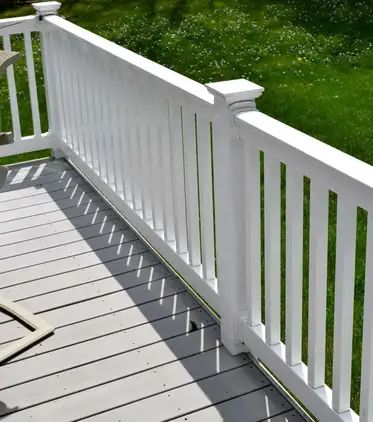
Vinyl Fences are a great choice if you want something that will last for a long time and not need much upkeep. They come in many styles and colors, so you can make your yard look good and be useful at the same time.
4. Invisible Fences
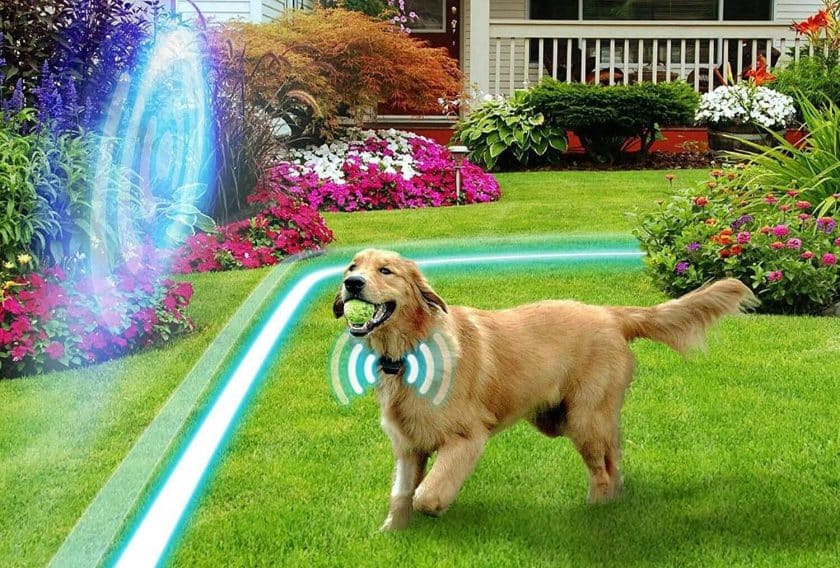
As we already said, invisible fence alternatives are a new electronic choice. Using an underground wire, they set up a border, and a special collar sends out a mild static charge to keep your dog from crossing the line.
Each of these types of fences has its pros and cons. The best one for you relies on your dog’s needs and behavior, how your property is laid out, and your budget. It’s important to think about all of these things before choosing to keep your furry friend safe and healthy while still letting them roam your yard.
What to Look for in Fence Alternatives for Dogs
When choosing the right fence alternatives for dogs, you need to carefully think about a few important things to make sure that your furry friend is safe and happy. There are many important things to think about when making the final choice as you look at your alternatives and compare them with different types of fences.
1. Height
One very important thing is the fence’s height. It must be high enough that your dog can’t jump over it. Think about your dog’s size and any traits unique to its breed. For example, some breeds are known for being good at jumping and agility.
2. Durability
The fence material should be strong and long-lasting, able to withstand different types of weather and your dog’s attempts to get over the fence. Vinyl and wood walls are usually strong options.
3. Visibility
Make sure your dog can see the fence. It keeps your dog from getting hurt and helps them learn to follow the lines. Chain link fences, for example, let you see what’s going on while keeping you safe.
4. Aesthetics
It’s important that the fence looks good and fits in with the rest of your property’s design. With a wide range of styles and finishes, both wooden and vinyl fences can look great in your yard.
If you think about these things when looking for the best dog fence, you can give your dog a safe and attractive place to live while still having control and peace of mind as a responsible pet owner.
What Kind of Fence Alternatives for Dogs Are Best?

To choose the best fence for your dog, you must carefully consider several important factors that affect the type of fence that will work best. There is only one answer to this question because every dog is different in size, behavior, and training needs. Choosing the best fence for your dog should be based on your dog’s needs and how your land is laid out.
1. Size of The Dog
The size of your dog is very important. Smaller dogs don’t need as high of a fence as bigger, more active kinds. Knowing what your dog can physically do will help you make a choice.
2. Dog Breed and Behavior
Different dog breeds behave in different ways. Some dogs naturally like to jump, dig, or get away. Knowing the breed traits and behavior of your dog can help you choose a fence that will keep them safe and deal with these tendencies.
3. Layout of Your Property
How your property is laid out is very important when choosing a fence. Think about any natural obstacles or features in the yard that might make the fence less effective at keeping your dog inside.
4. Budget
Your budget also plays a role in your choice. There are many types of fences and styles to choose from. It’s important to keep your dog safe, but you also need to think about how much you can spend.
To choose the best fence alternatives for dogs, you must first know what your dog needs and how your property is set up. The right choice will keep your dog safe and happy, whether it’s a chain link fence for a small dog, a wooden fence for a big breed, or an invisible fence for a dog that likes to dig.
How to Keep Your Dog from Going Through the Fence
Stopping your dog from digging under a fence requires you to be cautious and know how your dog acts. There are many reasons a dog might dig under a fence, such as being bored, interested, or just wanting to explore.
If you want to solve this problem successfully, you might want to try the following:
1. Set up a Digging Barrier
Building a digging barrier along the fence line is one of the most useful options. You can do this by putting a line of rocks, bricks, or a chicken wire strip under the fence. The barrier stops your dog from digging and makes it harder for them to get to the other side.
2. Enough Exercise and Mental Stimulation
Give your dog enough exercise and mental stimulation. Dogs often dig because they need more energy. Ensure your dog gets enough mental and physical exercise to stay happy and involved. Playtime walks and toys that you can participate in can help your dog feel less inclined to dig.
3. Train Your Dog
To fix behavior problems, you need to train your dog. If you catch your dog digging, either move their attention to a better activity or give them a treat for stopping.
4. Set up a Digging Area
Some dogs like to dig on their own. In this case, you should make a designated digging place in your yard. Put sand or soft dirt here and tell your dog to dig there. This way, your dog can dig without hurting the fence or yard.
By using these tips, you can figure out why your dog digs, you can keep them from digging under the fence, and give your pet a safe, well-kept open space.
How to Keep Your Dog From Going Over a Fence
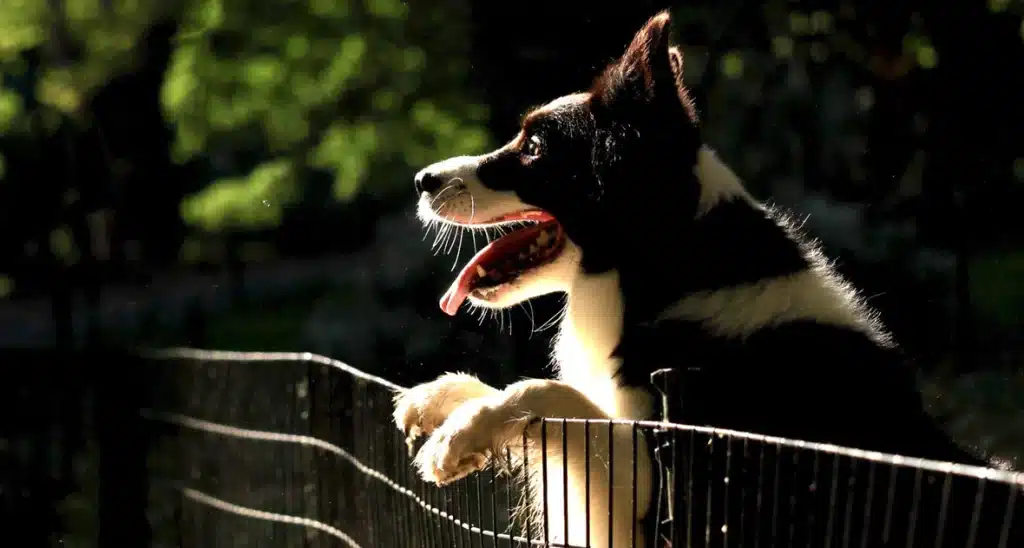
To keep your dog safe and keep them from getting out of the yard, you must stop them from going over the fence. Dogs may try to jump fences because they are interested, want to chase something on the other side, or want to get some exercise and explore.
If you want to keep your dog from jumping the fence, try these tips:
1. Heighten the Fence
If your dog likes to jump, make the fence talker. Do not put up a taller fence. Do not put a fence too high for your dog to jump over. You can make your fence taller by adding fence extensions or other barrier extensions.
2. Use Deterrents
There are different kinds of deterrents for dogs, like wolf rollers or cat spikes, that make the top of the fence less appealing for jumping. Your dog might not try to jump over the fence if these things are there.
3. Training and Obedience
The best way to stop jumping is to train your dog. Teach your dog words like stay and leave it. When your dog is close to the fence and wants to jump, use these commands to keep them from doing so.
4. Exercise and Play
To keep your dog from wanting to run away, make sure they get enough exercise and playtime in the yard. A tired dog is less likely to try to jump the fence. Toys and games that they can interact with can also keep them busy and happy.
Conclusion
Your furry friend’s safety and well-being are the most important things, and picking the right fence or another way of containment is a key part of making this happen.
The choices in this guide are flexible options that combine usefulness, good looks, and giving your dog the freedom they need to grow in your yard. All of these fence alternatives for dogs have their pros and cons. An invisible fence, a real barrier, an exercise pen, or a long leash are some examples.
Being a responsible pet owner means knowing your dogs’ needs, how they behave, and how your property works. It will help you make an informed choice.
You and your dog should establish trust and safety as the foundations of your relationship. The right restraint will let your dog explore, play, and enjoy the outdoors while you stay calm.
You can make a safe, friendly, and aesthetically pleasing space for your dog by considering the alternatives and things that affect your choice. It will help you and your four-legged friend get along better.
Frequently Asked Questions
Are Walls that My Dog Can’t See Safe?
When used correctly, invisible walls can keep people safe. To make sure your dog knows the lines and what will happen if it crosses them, you need to train it correctly.
Does Every Dog Breed Work with a Long Leash or a Tie-Out?
Many dog types can use long leashes or tie-outs, but you should consider your dog’s size and strength when choosing the length and material of the tie-outs. To make sure that some breeds can’t get away, as some bigger and stronger breeds may need a stronger and more safe tie-out. But breeds that are smaller or not as strong might not need as strong of a tie out. It’s important to ensure the tie outfits your dog needs so it doesn’t get hurt or run.
What Do I Do if My Dog Keeps Jumping Over the Fence Even Though I’m Trying to Stop Him?
Talk to a professional dog trainer or behaviorist if your dog keeps jumping over the fence. They can help you deal with this problem behavior through specialized training and advice.






